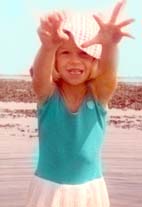 Due to a wash-out last weekend we cancelled our YDM stall because did not want to sit in the rain all day and have no customers. However we have found indoor premises for a show at the lovely Mt Cootha Botanical Gardens this weekend! Take that rain!
Due to a wash-out last weekend we cancelled our YDM stall because did not want to sit in the rain all day and have no customers. However we have found indoor premises for a show at the lovely Mt Cootha Botanical Gardens this weekend! Take that rain!It has been such a wet year - in my new home in the clouds of Maleny we have had asylum seeker froggies hopping under doors and through windows at night to get out of the rain so you have to be careful where you step! You know it's wet when the frogs can't take it anymore!
HANDMADE PORCELAIN AND JEWELLERY
Because Shannon and I got rained out at the Young Designers Market last week we'd love you to come to our special Christmas event in Brisbane, undercover!Our work will be on sale at the delightful Richard Randall Studio Gallery in the Mt Cootha Botanical Gardens this Saturday and Sunday 10am - 4pm.
SUNDAY SOIREE
Drop in on Sunday afternoon for a mocktail and some lovely cheese and biccies with Shannon and I and Bettina Palmer, who has kindly invited us to exhibit.
Where: Richard Randall Studio, Mt Cootha Botanicial Gardens
(on the left as you drive in to the garden carpark)
When: 10am - 4pm Saturday December 11th and Sunday December 12th
Soiree from 1-4pm on Sunday afternoon
--





 On the morning of the wedding foul curses could be heard as I hunted though packing boxes for tools to remove the sprues and sharp edges from the castings in my brand new studio!
On the morning of the wedding foul curses could be heard as I hunted though packing boxes for tools to remove the sprues and sharp edges from the castings in my brand new studio! 














 Inspired by what the students dared to do in class after informing them that "it probably wouldn't work but give it a go anyway", I found I was able to get quite delicate impressions in the cuttlefish bone. These castings are only 5cm long, to give an idea of scale. I also pressed some of the tiny tea tree seed cases into the cuttlefish, closed up the mould and poured molten scrap silver from the crucible to make these 2 pieces of double sided sheet:
Inspired by what the students dared to do in class after informing them that "it probably wouldn't work but give it a go anyway", I found I was able to get quite delicate impressions in the cuttlefish bone. These castings are only 5cm long, to give an idea of scale. I also pressed some of the tiny tea tree seed cases into the cuttlefish, closed up the mould and poured molten scrap silver from the crucible to make these 2 pieces of double sided sheet: 
 The castings are relief style owing to a brass sheet inner cutout mold. And the cuttlefish pattern shows its wavy texture in the background. Quite appropriately too I would say, as the cuttlefish bones were all found along beaches adjacent to Wallum/heath coastal areas like Kangaroo Island and Bribie Island.
The castings are relief style owing to a brass sheet inner cutout mold. And the cuttlefish pattern shows its wavy texture in the background. Quite appropriately too I would say, as the cuttlefish bones were all found along beaches adjacent to Wallum/heath coastal areas like Kangaroo Island and Bribie Island.

